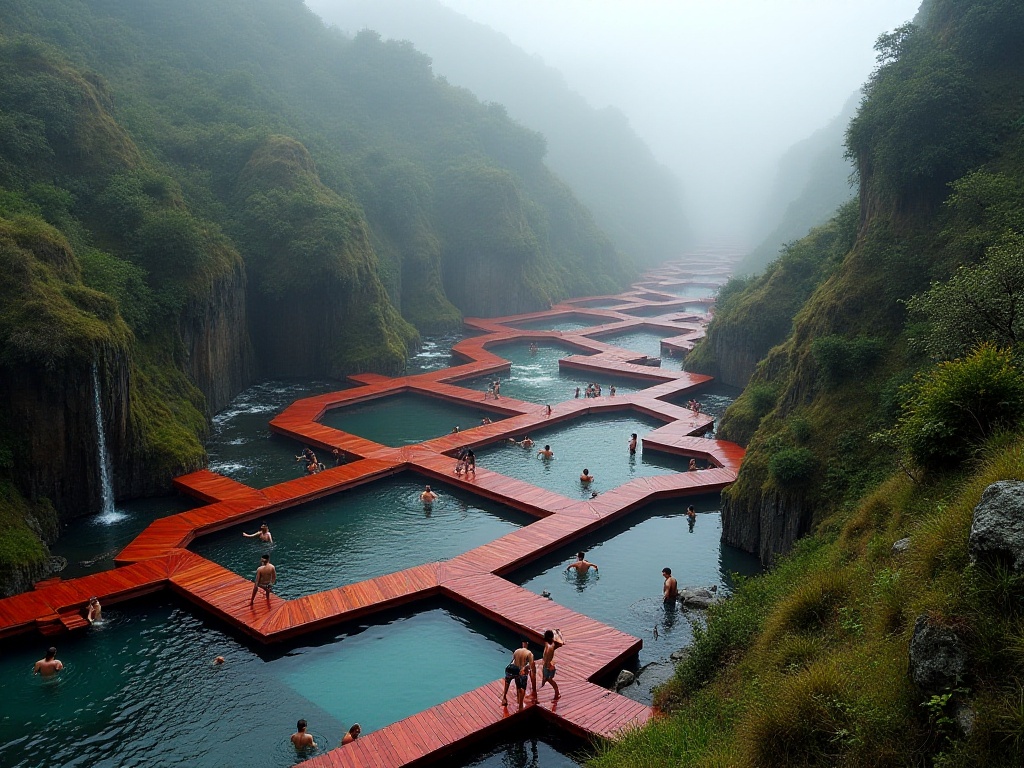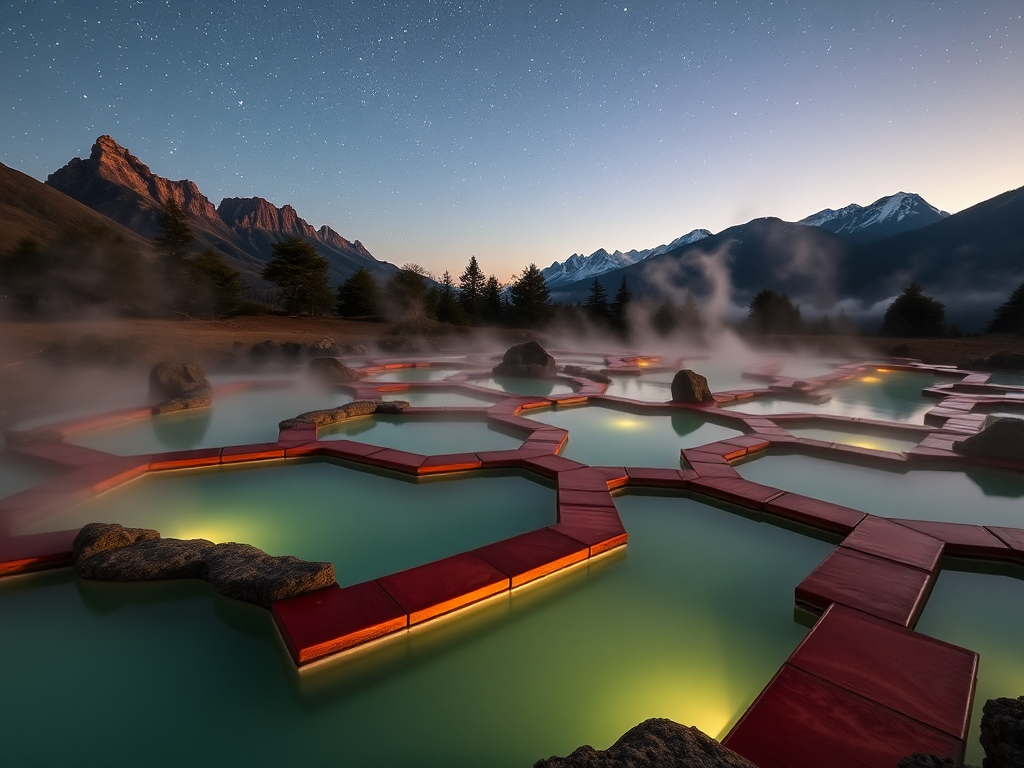Foreword
As an experienced hot spring enthusiast, I'm incredibly eager to share the unique charm of Japanese hot springs! When many people think of Japanese hot springs, they imagine luxurious pools in opulent hotels. But here's a secret - Japan's most beautiful hot springs are actually hidden deep in the mountains and forests, and these are the real treasures!
Over the years, I've visited hot springs across four continents - Asia, Europe, America, and Australia - from ancient Roman baths in Italy to traditional hammams in Turkey, from thermal baths in Hungary to geothermal springs in New Zealand. But honestly, the ones that touched my heart most were Japan's natural hot springs hidden in nature. Even now, thinking about those experiences still excites me!
Finding Hidden Springs
I'll never forget my first visit to Takaragawa Onsen in Gunma Prefecture - what an incredible experience. After several hours of travel from Tokyo, multiple transfers, and a hike up a mountain path, all fatigue vanished the moment I slipped into the hot spring.
The most enchanting aspect of Takaragawa Onsen is its location. Picture this scene: you're soaking in a perfectly temperatured outdoor bath, listening to the gentle flow of the Takaragawa River, surrounded by rolling mountains, under blue skies and white clouds. The river water is crystal clear, the surrounding forest lush and green, with a subtle fragrance of vegetation in the air. This feeling is truly beyond words.
I remember visiting once at dusk. The setting sun's rays danced on the water's surface, bathing the entire pool in golden light. The distant mountains gradually faded into twilight while the sky displayed brilliant orange hues. At that moment, I felt less like I was bathing and more like I was participating in nature's art performance.
Besides Takaragawa Onsen, I've visited many other hidden springs. For instance, the Jigokudani Snow Monkey Park hot spring in Nagano Prefecture, where you can witness the unique sight of Japanese macaques bathing in the springs. In winter, when the entire valley is covered in snow, these monkeys soaking in the hot springs are particularly adorable.
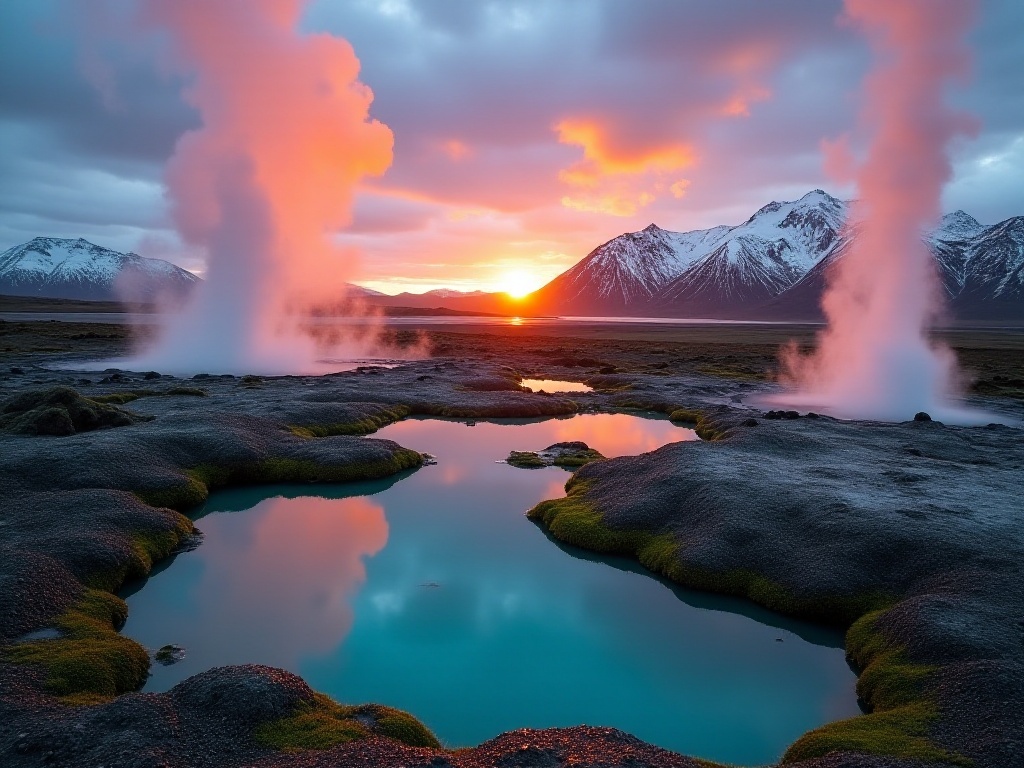
Cultural Heritage
Japanese hot spring culture is truly fascinating. It's not just a form of leisure but an essential part of Japanese culture. Hot springs have played a significant role in Japanese life from ancient times to the present.
Take Yufuin Onsen for example - it's a living history of hot spring development. Originally just a simple hot spring village, through generations of effort, it has evolved into a hot spring art town blending tradition and modernity.
In Yufuin, you can find traditional wooden baths alongside modern artistic hot spring designs. The town is filled with art galleries and craft shops, with beautiful flowers lining the streets. Every morning, the entire valley is shrouded in mist, with hot spring steam rising creates a dreamlike atmosphere.
I particularly love a hot spring inn called "Sansui-kan" in Yufuin. It maintains its century-old architectural style while cleverly incorporating modern elements. Their outdoor bath is built on a hillside, offering a panoramic view of the entire Yufuin basin. In the evening, watching the distant mountains gradually turn red in the sunset is absolutely mesmerizing.

Regional Characteristics
The distribution of Japanese hot springs is fascinating! Kyushu region is truly a hot spring paradise, with one-third of all Japan's hot springs located in this single region.
The city of Beppu is particularly impressive, with its underground hot spring water output accounting for 10% of Japan's total. My first visit to Beppu was absolutely stunning. Hot spring steam rises throughout the entire city, with white vapor emerging from vents in the ground as you walk, creating an otherworldly atmosphere.
Beppu's "Hell Springs" are particularly memorable. There are eight different springs, each with unique characteristics. Some have blood-red water, others are indigo blue, and some erupt periodically like geysers. Though these springs are too hot for bathing, they're incredible to observe.
Among all the hot springs I've visited, Atami Onsen remains most unforgettable. Its main attraction is the ability to enjoy hot springs while viewing the ocean. I remember once bathing at sunrise, watching the sun slowly rise above the horizon, turning the sea surface golden - it was absolutely beautiful.
Another special feature of Atami Onsen is its mineral-rich water. It's said to be particularly good for the skin, no wonder so many Japanese people come here for wellness. Plus, it's close to Tokyo with convenient transportation, making it perfect for weekend getaways.
Bathing Guide
While hot spring bathing might seem simple, there's actually quite a bit to know. As a frequent hot spring visitor, I've gathered some useful tips.
First is the water temperature issue. Japanese hot springs typically range between 40-43 degrees Celsius, but everyone's temperature tolerance differs. For first-timers, I recommend testing the water temperature with your hand first to find a comfortable level. If it feels too hot, wait for it to cool slightly before entering.
Next is bathing duration. Many people get excited and want to stay in continuously, but this isn't correct. The best approach is gradual - start with 5-10 minutes, then come out to rest before continuing. My usual routine is 15 minutes of soaking followed by 5 minutes of rest, repeated two to three times.
Hydration is crucial. Hot spring bathing causes significant sweating, so staying hydrated is important. I usually bring sports drinks or warm water, drinking some during each rest period. Drinking plenty of water after bathing is also important to prevent fatigue.
Another point is to avoid bathing on a full stomach. I recommend not eating for 2 hours before bathing to allow your body to fully relax. Wait for your body temperature to normalize after bathing before eating.
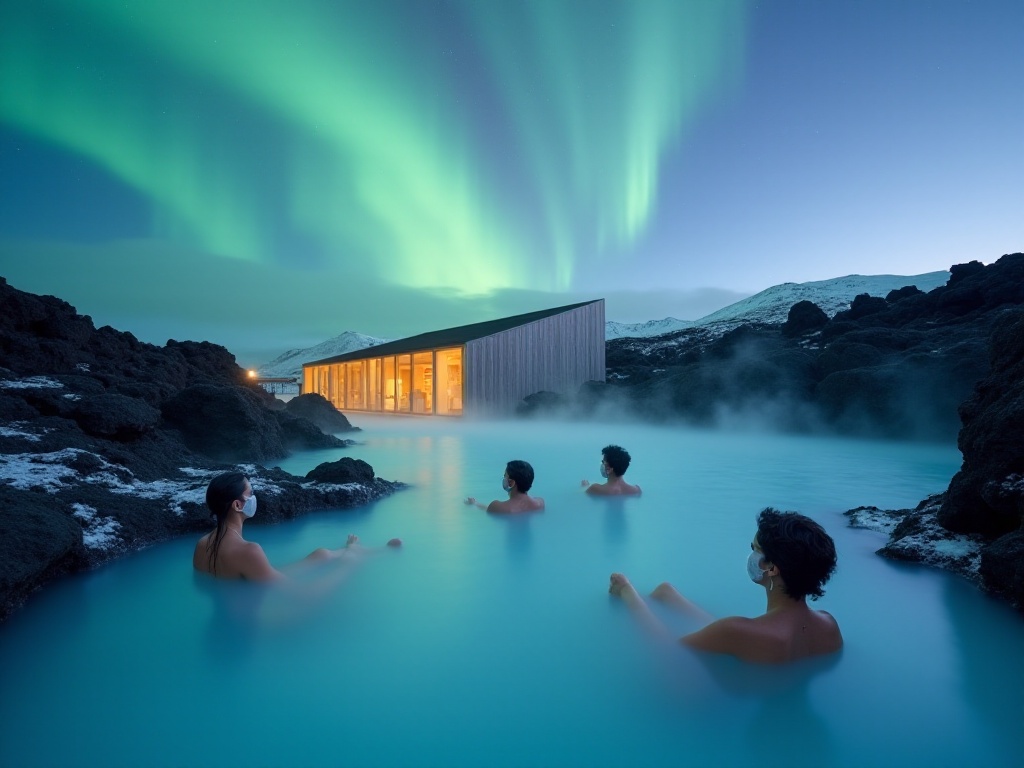
Seasonal Selection
Regarding the best season for hot springs, I think each season has its own charm.
Spring hot springs are most romantic. Especially during cherry blossom season, soaking in an outdoor bath under pink cherry blossoms, with occasional petals floating on the water surface, is absolutely beautiful. I particularly recommend Ikaho Onsen, where the stone steps are lined with cherry trees, creating a stunning spring scene.
Summer bathing might sound strange, but it's actually quite comfortable. Japanese have a saying: "One good sweat brings summer coolness." Having shaved ice or cold beer after bathing feels fantastic. Plus, hot springs are less crowded in summer, making them more peaceful.
Autumn is my favorite season. Red leaves and hot springs are a perfect combination. Especially in mountain springs, surrounded by red and yellow maple leaves, you feel enveloped by autumn colors while bathing. Hakone's hot springs are particularly suitable for autumn visits, with their beautiful maple leaves.
Winter hot spring bathing is pure enjoyment. Soaking in warm springs while snow falls outside is an indescribable experience. I remember bathing at Nyuto Onsen while heavy snow fell, with thick white snow accumulated around the bath, creating a fairy tale atmosphere.

Hot Spring Etiquette
Japanese hot spring bathing has strict etiquette. While these rules might seem troublesome, they ensure everyone can better enjoy the experience.
The most important rule is washing before entering the bath. Japanese hot spring areas have designated shower areas, and you must clean yourself thoroughly before entering the bath. This maintains water cleanliness and shows respect for other bathers.
Towel use also has specific rules. In Japan, everyone brings a small towel to bathe, but it shouldn't touch the hot spring water. The common practice is to fold it and place it on your head or beside the pool. When wiping sweat, lift the towel away from the water.
Tattoos require special attention. Many Japanese hot spring facilities don't allow guests with tattoos. This is because tattoos are traditionally associated with organized crime in Japan. If you have tattoos, check in advance if bathing is allowed - some places provide stickers to cover small tattoos.
Behavior in the bath also matters. Avoid loud noise, diving or swimming, and taking photos with phones. Hot springs are for relaxation, so maintain a quiet atmosphere.
In-Depth Experience
For a true Japanese hot spring cultural experience, I strongly recommend staying at a hot spring inn. It's absolutely worth trying!
Hot spring inns offer more than just accommodation and bathing - they're perfect places to experience traditional Japanese culture. From the moment you enter, you'll experience unique Japanese hospitality. Staff in kimonos welcome you, show you to your room, and explain how to use various facilities.
Rooms are typically Japanese-style with tatami mats, low tables, and cushions. At night, staff prepare traditional Japanese bedding. This traditional accommodation style lets you truly experience Japanese lifestyle.
The most anticipated aspect is usually the dining. Hot spring inns typically serve Kaiseki cuisine, a traditional high-end Japanese dining style. Each dish is carefully prepared with attention to both taste and presentation. I particularly recommend inns at Shirahama Onsen, known for exceptionally fresh seafood due to its Pacific Ocean location.
I remember staying at a Shirahama hot spring inn with a terrace facing the Pacific Ocean. Opening the curtains in the morning revealed the sunrise. At night, fishing boat lights dotted the ocean surface beautifully. The hot spring there was special too, built on a cliff edge - bathing felt like floating above the ocean.
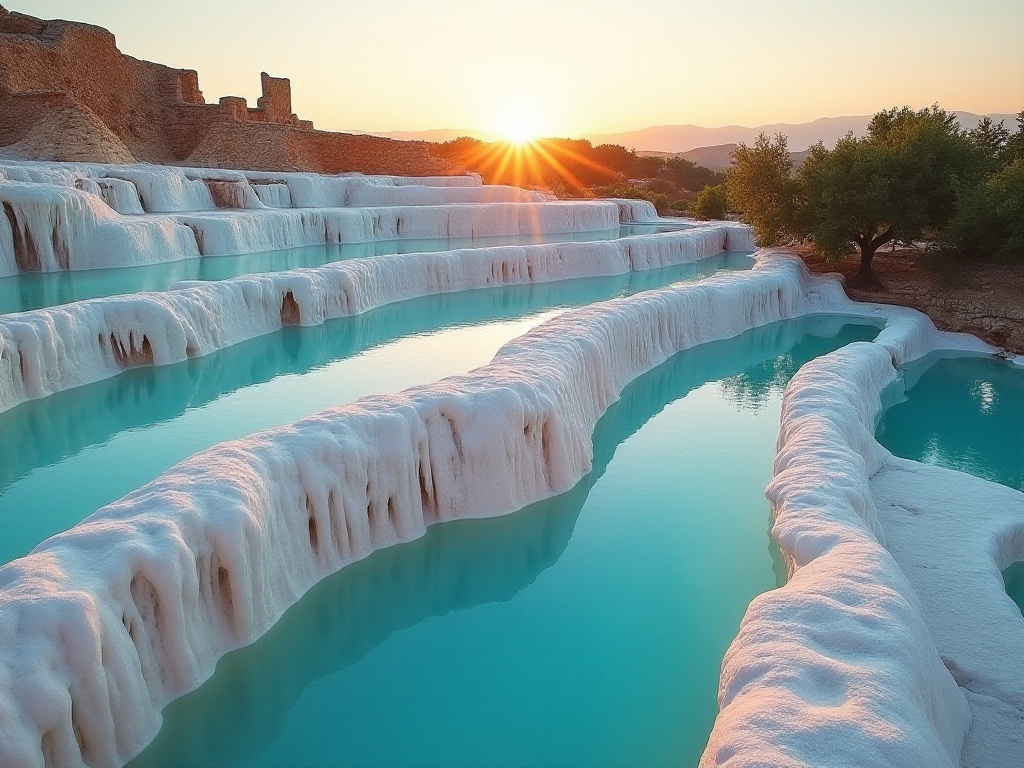
Final Thoughts
In Japan, hot springs are more than leisure spots - they're a living art form. Like tea ceremony and flower arrangement, they reflect Japanese attitudes and pursuits in life.
Through hot spring bathing, we can see how Japanese people find balance in busy modern life. They specifically make time for hot springs, using them to clear their minds and rest both body and spirit. This lifestyle is truly worth learning from.
After each hot spring visit, I feel completely renewed. Not just physically relaxed, but in better spirits too. This must be the magic of hot springs.
Having shared so many Japanese hot spring stories, next time I'd like to share experiences from European hot springs. Trust me, those castle-based hot springs will amaze you. Imagine bathing in centuries-old castles surrounded by Baroque decorations - it must be quite special.
While each region's hot spring culture has its uniqueness, Japanese hot springs left the deepest impression on me. Perhaps because Japanese people have perfected the art of hot spring bathing, turning it into an art form. If you haven't experienced Japanese hot springs yet, I truly recommend trying them - you'll surely fall in love with the experience.






